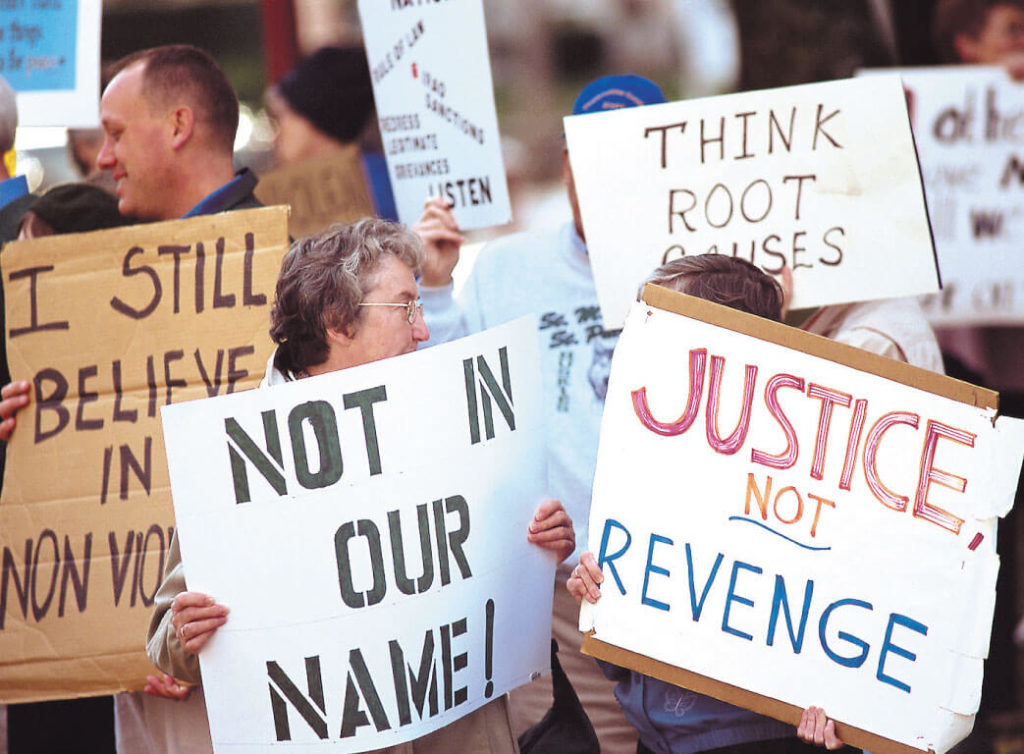
The word moral refers to right and wrong, good and evil. What is the right thing to do? What is good? These are basic moral questions. What makes a good person? What makes a good society?
Human beings have the capacity to choose. To be good we discern and freely choose what is good.
“Beautiful Charlotte” makes choices that harm her own body. Her choices lead to anorexia that threatens her life.
The devil in Sunday’s gospel story tempts Jesus to turn stones to bread, to show off his divine power, and use it to conquer the world. Jesus chooses instead to accept the limits of being human, to serve God, and live by God’s word.
Both Matthew and Luke collect Jesus’ moral codes into a sermon. In Matthew Jesus gives this teaching on a mountain. In Luke Jesus teaches on a plain. The Sermon on the Mount and the Sermon on the Plain both begin with beatitudes, sayings about who is happy and blessed in God’s eyes.
In both sermons Jesus asks his followers to respond nonviolently to injury and wrongdoing. Jesus teaches us to love our enemies, not just our friends. He calls us to be like God who lets the rain fall on the just and unjust.
Jesus’ code of nonviolence and love of enemies has at its heart a call to be healers of broken relationships, negotiators of painful conflicts, restorers of community. Turn the other cheek; give the person who wants my shirt my coat, go the extra mile.
Our compassionate, creative God sets the standard of goodness. Jesus calls us to be good as God is good.
The bible contains at least three moral codes besides Jesus’ challenge to love as God loves us and as he loves us. For example, in the Old Testament the moral code called talion states its basic principle, “An eye for an eye and a tooth for a tooth.”
Talion insists a punishment must be in proportion to the crime — an eye for an eye, not a life for an eye. Compensation or vengeance can equal, but not exceed, the crime. Find the law of talion in Leviticus 24.17-20.
The law of talion puts limits on the code of vengeance. By the code of vengeance, if a person kills another, avengers have the right to destroy the murderer’s whole family or village. This code escalates violence. Blood begets more blood.
Although this code comes from the distant past, child soldiers today report that their captors motivate them to avenge the violent deaths of their parents and families. Gangs often follow this code. On the other hand Batman responds to the murders of his parents by choosing to save people in his city from violence and crime.
The Old Testament also teaches the golden rule. This moral principle asks us to put ourselves in others’ shoes, to consider other people’s rights and feelings in how we conduct our lives. We measure how we treat others by the standard of how we want to be treated ourselves.
Each of these four codes holds up a principle of what is moral or good in people’s relationships with each other. Each code puts a wrongdoer and a wronged person into a different relationship. Each code expresses a different standard for what is good.
- Vengeance returns any amount of evil for an injury.
- Talion keeps the right to return an injury for an injury in proportion — a life for a life, an eye for an eye.
- The golden rule asks us to treat one another as equals.
- Jesus’ moral code calls for returning evil with good. The response of an injured person in this code is out of proportion. It aims to stop conflict and heal wounds.
